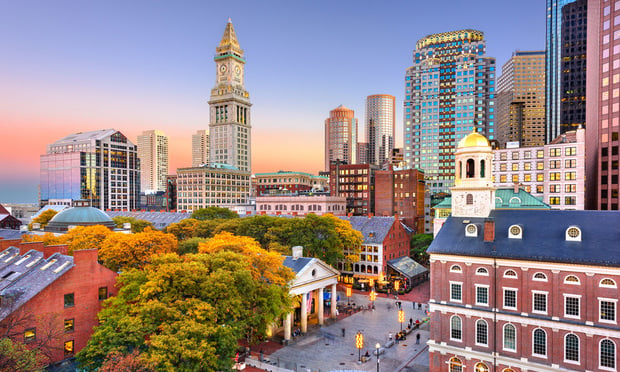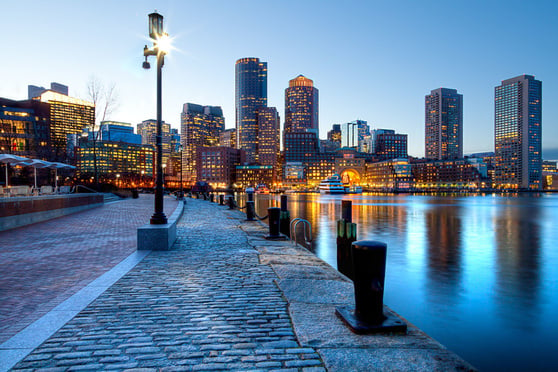BOSTON—Mayor Martin Walsh has announced that City of Boston has registered more than 10,000 new housing units since October 2014, about one-fifth of the way to his target of 53,000 units to be created by the year 2030.
The ambitious plan entitled “Housing a Changing City: Boston 2030” was first released by the mayor in October 2014. Since then there have been 10,486 units completed. In addition there are 7,242 housing units currently under construction, another 17,285 currently in the development review process, and another 4,167 are in the pipeline. That brings the total number of units toward the housing plan at 39,180 or approximately 74% of the mayor's target of 53,000 by 2030.
“Boston is growing faster than at any time in the last 50 years, and we need to make sure that anyone who wants to help make our city better can afford to live here,” says Mayor Walsh. “In today's strong housing market, that means we have to create housing at all levels—from luxury units to housing for seniors and formerly homeless people. I am so pleased that we have reached this milestone, and we are not going to rest until we have reached our goals.”
Back in April, Mayor Walsh announced that the city was on target to reach his lofty housing goal by 2030.
According to city officials, Boston leads the nation in the percentage of its housing stock set aside as deed-restricted affordable units. The current round of completions maintains that status, with 20% of new units set aside as affordable housing. Of those units, 60% are targeted as affordable to families making less than 60% of Area Median Income—a combined household income of $53,000 or below for a family of three. The remaining 40% are affordable to middle-income residents—those families with household incomes between $60,000-$125,000.
The city is seeing some rent stabilization in some select high-growth rental markets. A new city analysis of rental trends indicates that rent stabilization appears to be underway in several of the neighborhoods that have seen the highest rent growth. Central Boston, which has had 3,030 units completed, has seen a 25% increase in rents. However, rents in older units in this neighborhood have now declined by just over 1%, the administration notes.
In the Fenway neighborhood, which has seen rents grew by 6%, rents in older units have declined by .4%. And in the South End, which enjoyed nearly a 10% increase in rents, has seen rents in older units only rise by .3%.
Stabilizing rents have not reached South Boston, however. South Boston, which includes the Seaport District, has grown its housing stock by more than 26%, yet still has seen a 6% increase in rents. It should be noted however, that South Boston has added enough commercial space to accommodate more than 8,000 new workers, which indicates that supply has yet to catch up with demand.
The city's housing analysis also reports that of more than 10,000 completed units, 67% were downtown, while 33% were in the outer neighborhoods. Current trends in permits show a reversal of this trend with 69% of the permit applications in 2016 located in the outer neighborhoods, with 31% in the downtown core.
Nearly one-quarter of the completed units represent homeownership opportunities, with that trend continuing to grow as a shift continues in permits pulled from rental to condominium. In 2013, 82% of permits pulled were for rental property; in 2016, that number has thus far decreased to 43%.
Steady gains in the US economy have resulted in net positives for the multifamily sector—will this wave continue for the foreseeable future? What's driving development and capital flows? Join us at RealShare Apartments on October 19 & 20 for impactful information from the leaders in the National multifamily space. Learn more.
BOSTON—Mayor Martin Walsh has announced that City of Boston has registered more than 10,000 new housing units since October 2014, about one-fifth of the way to his target of 53,000 units to be created by the year 2030.
The ambitious plan entitled “Housing a Changing City: Boston 2030” was first released by the mayor in October 2014. Since then there have been 10,486 units completed. In addition there are 7,242 housing units currently under construction, another 17,285 currently in the development review process, and another 4,167 are in the pipeline. That brings the total number of units toward the housing plan at 39,180 or approximately 74% of the mayor's target of 53,000 by 2030.
“Boston is growing faster than at any time in the last 50 years, and we need to make sure that anyone who wants to help make our city better can afford to live here,” says Mayor Walsh. “In today's strong housing market, that means we have to create housing at all levels—from luxury units to housing for seniors and formerly homeless people. I am so pleased that we have reached this milestone, and we are not going to rest until we have reached our goals.”
Back in April, Mayor Walsh announced that the city was on target to reach his lofty housing goal by 2030.
According to city officials, Boston leads the nation in the percentage of its housing stock set aside as deed-restricted affordable units. The current round of completions maintains that status, with 20% of new units set aside as affordable housing. Of those units, 60% are targeted as affordable to families making less than 60% of Area Median Income—a combined household income of $53,000 or below for a family of three. The remaining 40% are affordable to middle-income residents—those families with household incomes between $60,000-$125,000.
The city is seeing some rent stabilization in some select high-growth rental markets. A new city analysis of rental trends indicates that rent stabilization appears to be underway in several of the neighborhoods that have seen the highest rent growth. Central Boston, which has had 3,030 units completed, has seen a 25% increase in rents. However, rents in older units in this neighborhood have now declined by just over 1%, the administration notes.
In the Fenway neighborhood, which has seen rents grew by 6%, rents in older units have declined by .4%. And in the South End, which enjoyed nearly a 10% increase in rents, has seen rents in older units only rise by .3%.
Stabilizing rents have not reached South Boston, however. South Boston, which includes the Seaport District, has grown its housing stock by more than 26%, yet still has seen a 6% increase in rents. It should be noted however, that South Boston has added enough commercial space to accommodate more than 8,000 new workers, which indicates that supply has yet to catch up with demand.
The city's housing analysis also reports that of more than 10,000 completed units, 67% were downtown, while 33% were in the outer neighborhoods. Current trends in permits show a reversal of this trend with 69% of the permit applications in 2016 located in the outer neighborhoods, with 31% in the downtown core.
Nearly one-quarter of the completed units represent homeownership opportunities, with that trend continuing to grow as a shift continues in permits pulled from rental to condominium. In 2013, 82% of permits pulled were for rental property; in 2016, that number has thus far decreased to 43%.
Steady gains in the US economy have resulted in net positives for the multifamily sector—will this wave continue for the foreseeable future? What's driving development and capital flows? Join us at RealShare Apartments on October 19 & 20 for impactful information from the leaders in the National multifamily space. Learn more.
Want to continue reading?
Become a Free ALM Digital Reader.
Once you are an ALM Digital Member, you’ll receive:
- Breaking commercial real estate news and analysis, on-site and via our newsletters and custom alerts
- Educational webcasts, white papers, and ebooks from industry thought leaders
- Critical coverage of the property casualty insurance and financial advisory markets on our other ALM sites, PropertyCasualty360 and ThinkAdvisor
Already have an account? Sign In Now
*May exclude premium content© 2024 ALM Global, LLC, All Rights Reserved. Request academic re-use from www.copyright.com. All other uses, submit a request to [email protected]. For more information visit Asset & Logo Licensing.









